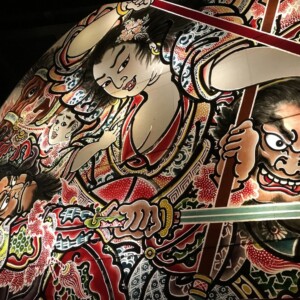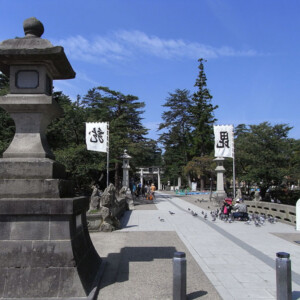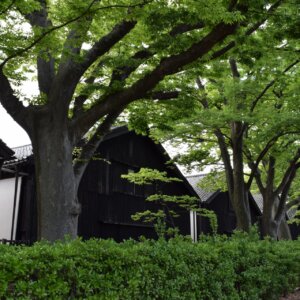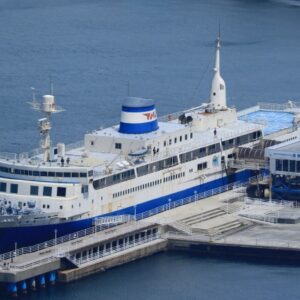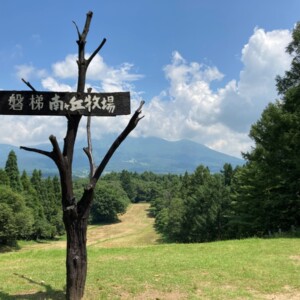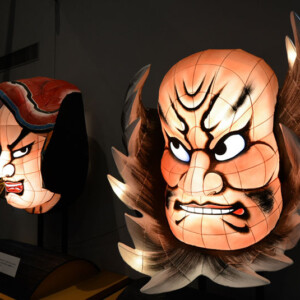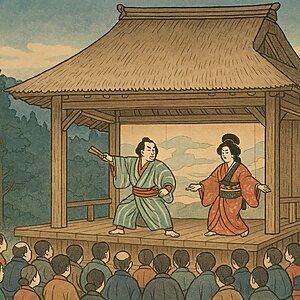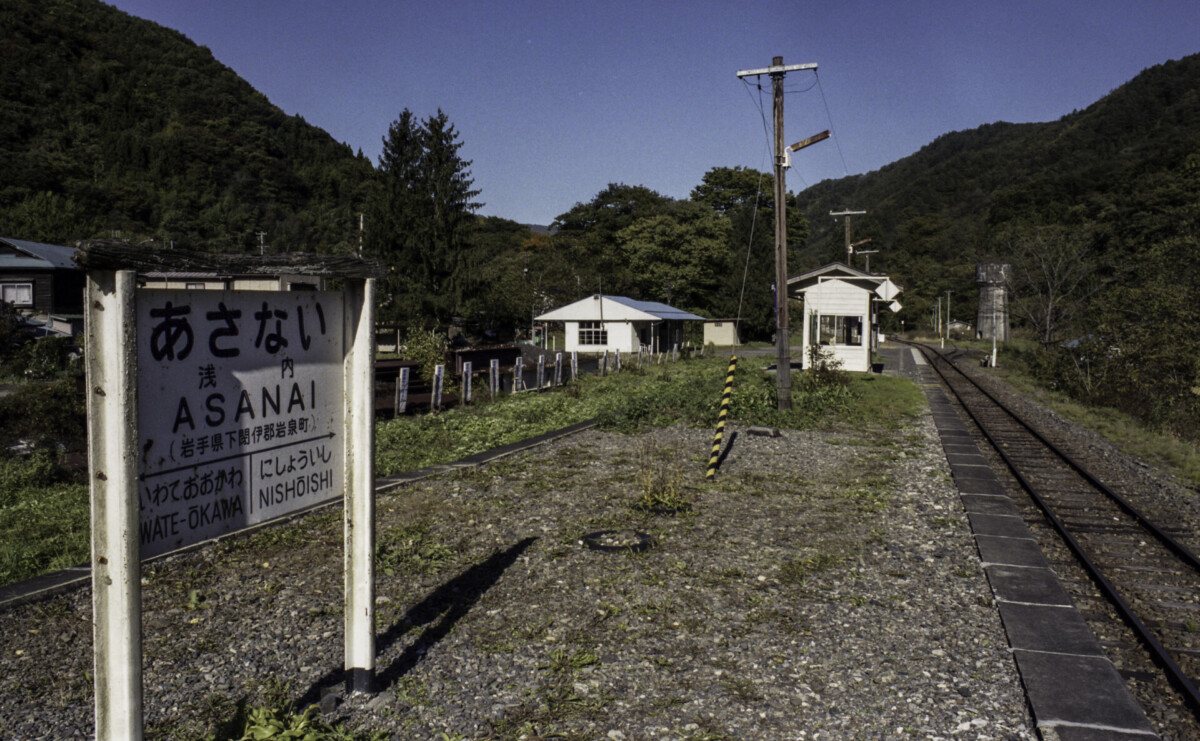
A picture book modeled on the railways of the Tohoku region, “Shuppattsu Shinko!” Let's follow the itinerary of
table of contents
I'm sure many of you have read the picture book "Let's Go!" Yamamoto Tadayoshi , published by Fukuinkan Shoten
This was one of my favorite picture books as a child, and I sometimes read it to my own children now
This time, we will explain the railway journey depicted in this picture book, which is said to be set in the Tohoku region
Let's depart!
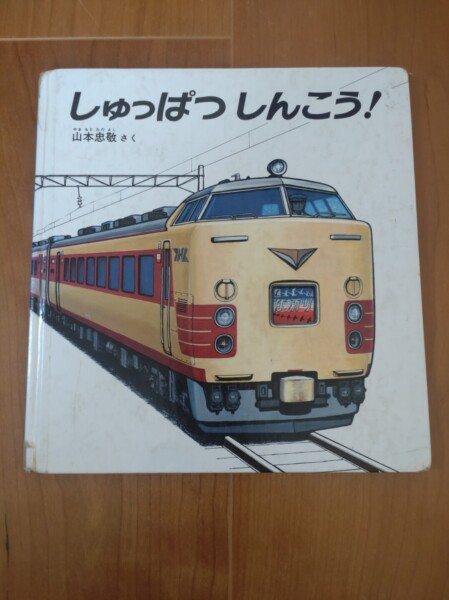
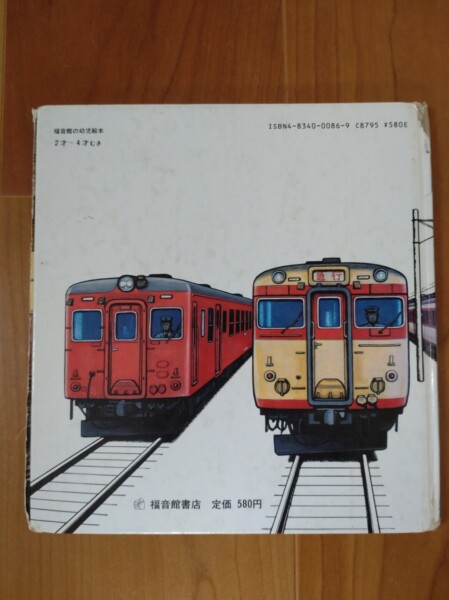
"Departure Journey!" is that "Mother" and "Miyo-chan from a "big station" to a "small station" by changing trains - a limited express train, a rapid train, and a local train - to meet "Grandpa."
The text does not say anything about where exactly in Japan the two are traveling, but we can make some inferences from the illustrations
In addition, the author traveled by train to the Tohoku region with the editorial staff to do research before creating this picture book.
The contents of the book are based on this research, so we will explain it step by step.
Express train departs!
The first sentence of the book goes like this:
Mom and Miyoko
boarded the express train from the big station.
is thought to be Sendai Station , the largest station in the Tohoku region
"Hatsukari" , as can be clearly seen in the picture .

"Hatsukari" was a limited express train that connected Ueno Station and Aomori Station
The vehicle depicted is the 485 series, a limited express train that was representative of the Japanese National Railways (the predecessor of today's JR). We have explained the limited express "Hatsukari" in a separate article, so please take a look at that as well
There is a sign on the station platform that reads "12:50 bound for Aomori."
According to the timetables from October 1978 and June 1982 that I have on hand, the Hatsuri 3 bound for Aomori is scheduled to depart Sendai Station at 12:50, so it can be said that the model for the picture is definitely the Hatsuri 3.
The express train
picks up speed and moves forward.
On the next page, a green train is running behind the imposing 12-car Hatsukari
This is undoubtedly the 200 series train, which was used when the Tohoku Shinkansen opened
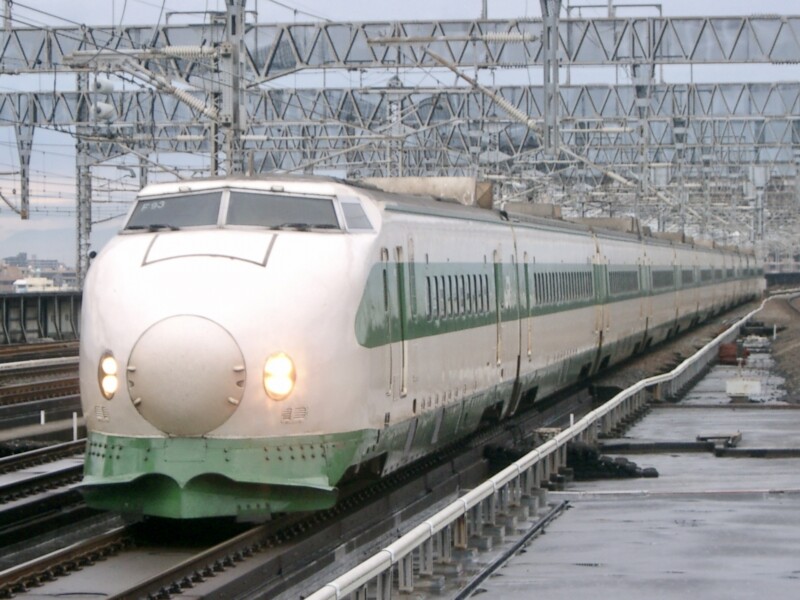
"Let's Start! " was first published in August 1982
The Tohoku Shinkansen had "provisionally opened" between Omiya Station and Morioka Station two months earlier in June. The author visited the area to do research the previous year, and the Tohoku Shinkansen train on this page is thought to depict a test run
The Tohoku Shinkansen Line will be fully operational in November 1982. After the full-scale opening, the Hatsukari express train will no longer run between Ueno Station and Morioka Station, but will instead run between Morioka Station and Aomori Station
In other words, the Hatsukari and the Tohoku Shinkansen could be seen running side by side, as in this picture book, only a short period of time, from the start of test runs of the Tohoku Shinkansen until its full-scale opening in November 1982 .
On the railway line,
we pass an electric locomotive.
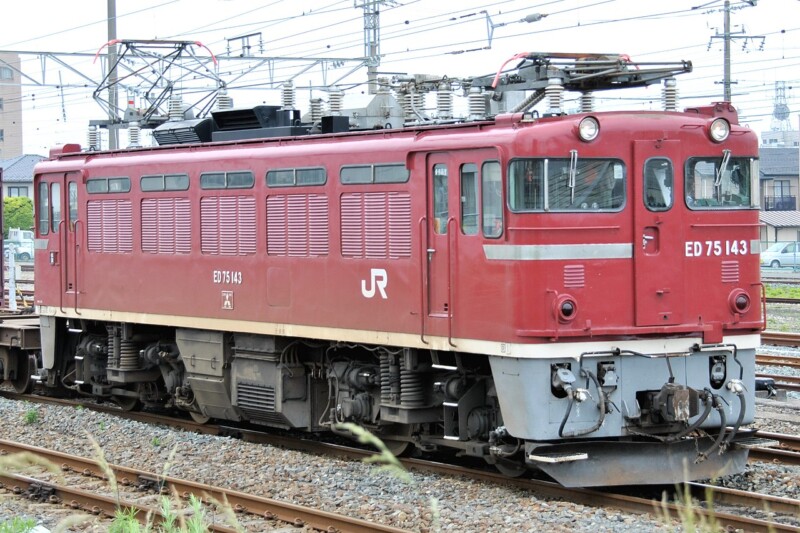
Author : Kuha455405 – Photo by myself, CC Attribution-ShareAlike 3.0, https://commons.wikimedia.org/w/index.php?curid=10673244
The red vehicle that passed the Hatsukari on the railway bridge is an ED75 electric locomotive. This vehicle tows passenger cars and freight cars in the Tohoku and Joban regions, as well as Hokkaido and Kyushu
The illustration in this picture book does not show the rear of the electric locomotive, so it is unclear what kind of train it is pulling or whether the locomotive is running on its own
A town came into view at the foot of the mountain
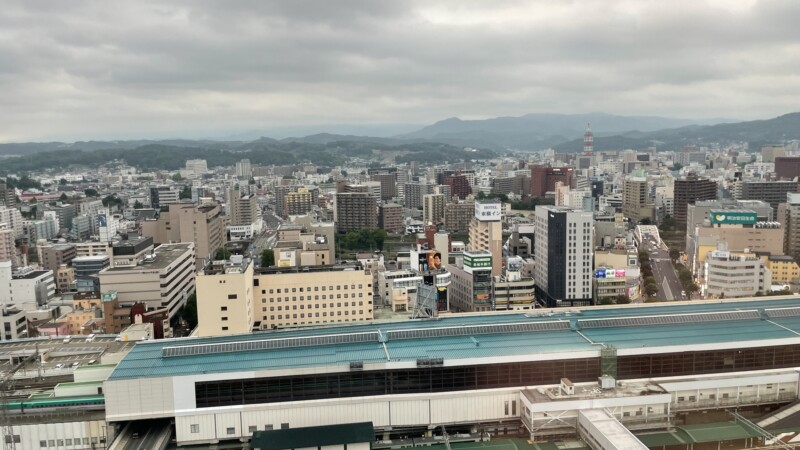
The express train eventually arrives at a town at the foot of the mountain, presumably the town of Morioka
The distance from Sendai Station to Morioka Station is 183.5 km, and according to the timetable at the time, the arrival time of "Hatsukari 3" at Morioka Station was 14:54, so the journey time from Sendai Station was 2 hours and 4 minutes
It's a bit of a long journey for little Miyo, but their journey is still on
The express train is about to depart!
When they arrive at the station at the foot of the mountain, Mom and
Miyoko get off the express train and
transfer to a public transport train.
When the two arrive at a station at the foot of the mountain, which appears to be Morioka Station, they get off the express train and transfer to an express train
The platform where the express train stops and the tracks end is thought to be platform 0 at the current Morioka Station, where trains on the Iwate Galaxy Railway Line and the JR Hanawa Line depart and arrive
Based on descriptions on later pages, it is assumed that the express train the two board is a
Yamada Line express train heading from Morioka Station towards Miyako The train is a Kiha 58 diesel railcar, a familiar sight on express trains from the days of the Japanese National Railways (it runs on diesel, not an electric train).
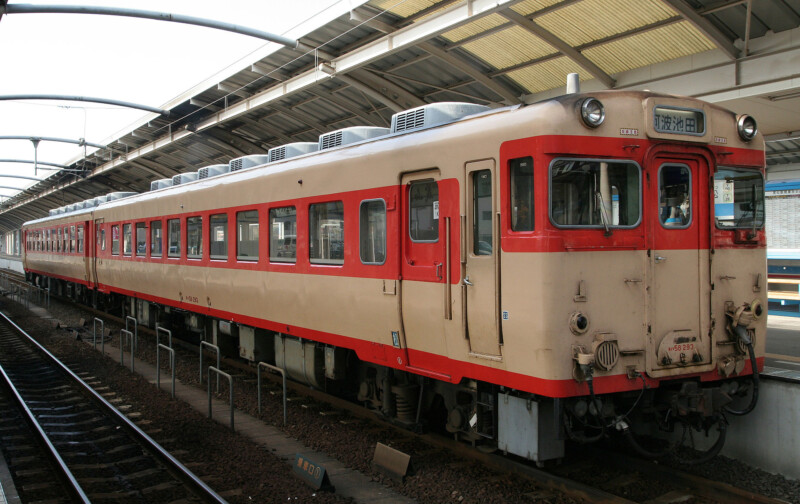
Author : Mitsuki-2368 – Own work, CC BY 3.0, https://commons.wikimedia.org/w/index.php?curid=3365513
By the way, what is the name of this express train? All we can get from the picture is that it is an express train and that it is a four-car train. According to the timetable at the time, the express train running from Morioka Station to Miyako Station on the Yamada Line was
- 8:58am Sotoyama (departing Morioka, via Miyako, Kamaishi and Hanamaki, bound for Morioka)
- 12:34 departure Yoneshiro 2 (departing from Akita, via Hanawa Line, bound for Miyako)
- 17:15 departure Rias (departing Morioka, via Miyako, bound for Kamaishi)
Three trains were in operation
Since the express train in the picture is stopped at a dead-end platform, it is likely an express train departing from Morioka Station. This eliminates the "Yoneshiro 2"
the Rias which departs at 5:15 p.m. , it does not match the description in the picture book because even during the summer solstice, the sun will set while it is running and it will not make it in time for the last local train that comes later.
So the Sotoyama is the only option? That's still questionable. As mentioned earlier, Hatsukari 3 the Sotoyama the Yoneshiro 2, which departs at 12:34 PM . This would be the same even if the first express train of the morning, the Hatsukari 1, arrived in Morioka at 1:57 PM.
In other words impossible to arrive at the destination "small station" on the same day by changing from the "Hatsukari" to the Yamada Line express train . How should we interpret this?
In fact, the author of this picture book states that "This picture book is fictional story about a train traveling through the landscapes and time of my imagination ." I believe that the author also recognized that the journey depicted in this picture book would be impossible.
The express train has arrived at a station in the mountains.
Now we will transfer to a regular train.
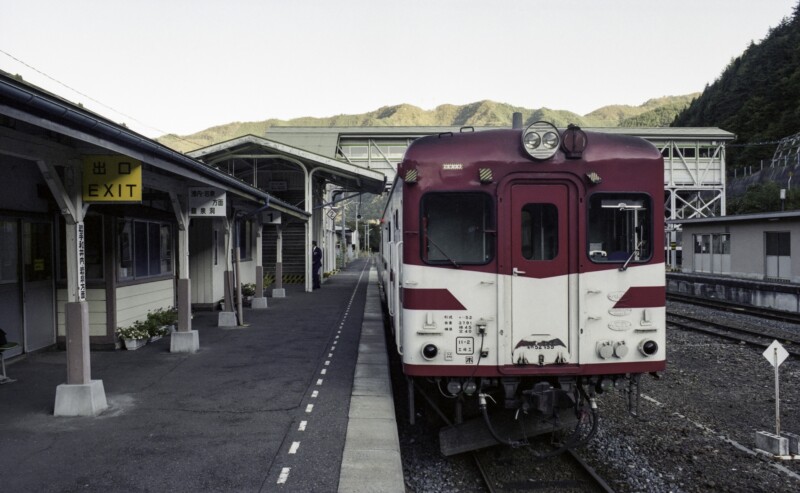
The model for the station in the mountains where you change from an express train to a local train is thought to be Moichi Station
However, some things have changed since the picture book, such as the disappearance of platform 1, where local trains stop, and the dismantling of the overpass that was over the tracks. Also, although the illustration clearly shows several station staff, as of April 2018 the station is unmanned and staff are not present all day
Also, the fact that freight cars carrying cargo are parked at local train stations like this one gives a sense of the times
Shortly after this picture book was published, in November 1982, freight handling at Moichi Station ceased, and in November 1986 freight trains on the Yamada Line were discontinued
The journey from Morioka Station to Moichi Station is 87.0 km, and takes about 1 hour 50 minutes to 2 hours by express train. It was another long journey for the kids
Regular train departs!
The local train I transferred to at Moichi Station is modeled after a train on the now-defunct Iwaizumi Line .
The Iwaizumi Line was a 38.4km line that started at Moichi Station and ran to Iwaizumi Station in Iwaizumi Town
The Iwaizumi Line has always had few users, and there have been frequent discussions about closing the line, but it has been spared because there were no roads in place for replacement buses. However, even though it was spared from closure, the decline in users continued, and by the 2000s it had become the least used line in Japan
After a train derailment caused by a landslide in July 2010, service on the entire line was suspended, and the line was abolished on April 1, 2014
The local train in the picture book is depicted as a two-car Kiha 52 diesel railcar (also not an electric train). The number of passengers depicted also appears to be smaller than the two trains we have ridden so far
Was the Iwaizumi Line also used in this way at the time?
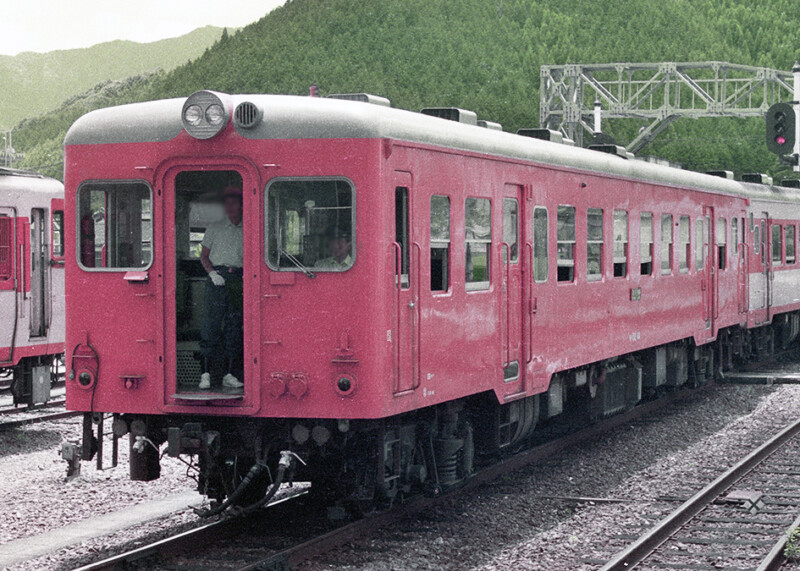
Author: spaceaero2 – Own work. Kubokawa Station, CC BY 3.0, https://commons.wikimedia.org/w/index.php?curid=12836220 .
At the time the picture book was published, there were only five round trips per day running the entire Iwaizumi Line (just before the line was closed, there were three round trips per day). Also, the train departing from Moichi Station at 6:10 PM was the last train bound for Iwaizumi
As mentioned in the section on express trains, the express "Rias" that arrives at Moichi Station at 7:16 p.m. will not make it in time for the last train on the Iwaizumi Line, and it will already be dark by then
It seems that the journey in this picture book should be considered purely fictional
We arrived at a small station deep in the mountains
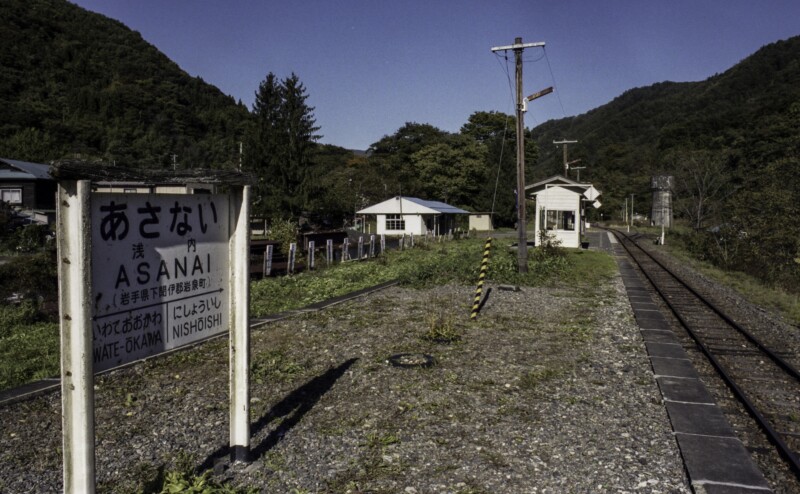
Finally, Mom and Miyoko arrived at a small train station, their destination
Asanai , which was two stops before Iwaizumi Station, the terminus of the Iwaizumi Line . The journey from Moichi Station is 31.0 km, and takes about 40 to 50 minutes.
The author said that he got off at this station based on "the editor's intuition," but commented that it was "the perfect station to use as the final destination for a picture book."
In the picture, the driver of a local train and the station attendant are handing over what appears to be a " tablet " necessary to ensure the safe operation of trains. The rule is that only trains that have this tablet are allowed to proceed to the next station, which prevents trains from colliding with each other. Asanai Station has been an unmanned station since 1986.
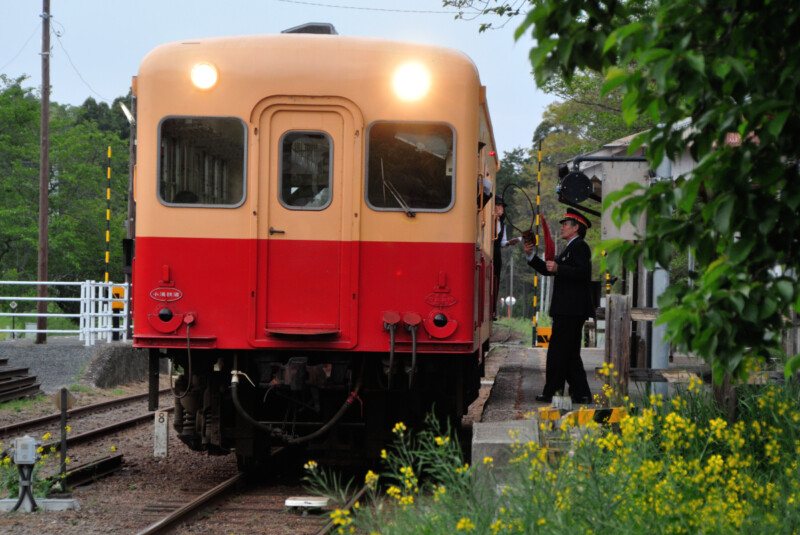
On the last page of the picture book, when the mother and Miyo meet the grandfather and friends, the clock at the station shows 6:07. Since it is impossible for it to be 6:00 in the morning, it is likely to be 6:07 in the afternoon
However, according to the timetable at the time, there were no trains arriving at Asanuchi Station around 6 p.m., so it seems safe to assume that this is a completely fictitious time setting
The train departed from the larger station at 12:50, so it took a little over five hours to get to the smaller station. The total travel time for the three trains we have taken so far is about five hours, so the clock on the last page may have been set to this time
The Asanuchi Station building remains even though the Iwaizumi Line has been discontinued. A bus (Iwaizumi Shigeshi Line) that replaced the discontinued Iwaizumi Line runs through the nearby bus stop about three times a day, so it is possible to get there by public transportation
Information
- Name: Asanai Station Building
- Location: Asanai Kamiitsubo, Iwaizumi-cho, Shimohei-gun, Iwate Prefecture
Google MAP
Was it possible to travel from Sendai Station to Asanui Station during the day?
Again, as depicted in the picture book,
Limited Express "Hatsukari" → Yamada Line express train → Iwaizumi Line local train
In reality, it was impossible to travel from Sendai Station to Asanui Station in one day by changing trains
So how could you make the trip within one day? To do so, you would need to change the train you were taking, either the Hatsukari Limited Express or the Yamada Line express train
For example, if you take the Hatsukari 3 train, which departs Sendai Station at 12:50 and arrives at Morioka Station at 14:54, and then transfer to a local train bound for Kamaishi departing Morioka at 14:58, you will arrive at Moichi Station at 17:17. If you then transfer to the last train on the Iwaizumi Line, which departs Moichi Station at 18:10, you will arrive at Asanai Station at 18:58
Alternatively, you can take the express train "Kurikoma 3" bound for Aomori, which departs Sendai Station at exactly 10:00, arriving at Morioka Station at 12:28.
Alternatively, you can take the express train "Yoneshiro 2" which departs Morioka Station at 12:34, arriving at Moichi Station at 14:25, and transfer to the local train on the Iwaizumi Line departing at 15:08, arriving at Asanai Station at 15:56.
Would this be a realistic itinerary?
Either way, the journey from Sendai Station to Asanui Station is 301.5km, taking about six hours, making it a fairly long journey . I'm impressed by how Miyo-chan and her mother managed to make it through such a long journey.
summary
The train journey depicted in "Departure Shinkou!"
However, the illustrations, which are based on the author's research, are realistic and not overly sweet. If you ever have the chance to pick up this picture book, please take a look at the details of the illustrations as well as the story
Since this is the last point, I'll add a side note.
"Departure proceed" is a phrase that the train driver utters to confirm that "the departure signal is proceeding," in other words, that the "departure signal" indicating whether or not the train can depart is green.
It is not a phrase that expresses enthusiasm like "Let's get going!" I hope you will remember it as a bit of trivia


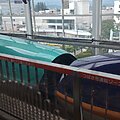

![The Yamada Line's path was asked, "Are you planning to ride a monkey?" [Iwate Prefecture] 00001963-6](https://jp.neft.asia/wp-content/uploads/2024/12/00001963-6-150x150.jpg)

![Kurokawa Noh is a Shinto ritual that has been developed independently by farmers for 500 years [Yamagata Prefecture] Kurokawa Noh](https://jp.neft.asia/wp-content/uploads/2023/06/598b30b90d5a68342de7f669391a0b06-150x150.webp)
![[Akita Prefecture during the Boshin War] What were the decisions of the Kubota, Kameda, Honjo, and Yajima domains? 24115050_m](https://jp.neft.asia/wp-content/uploads/2022/06/24115050_m-150x150.jpg)


